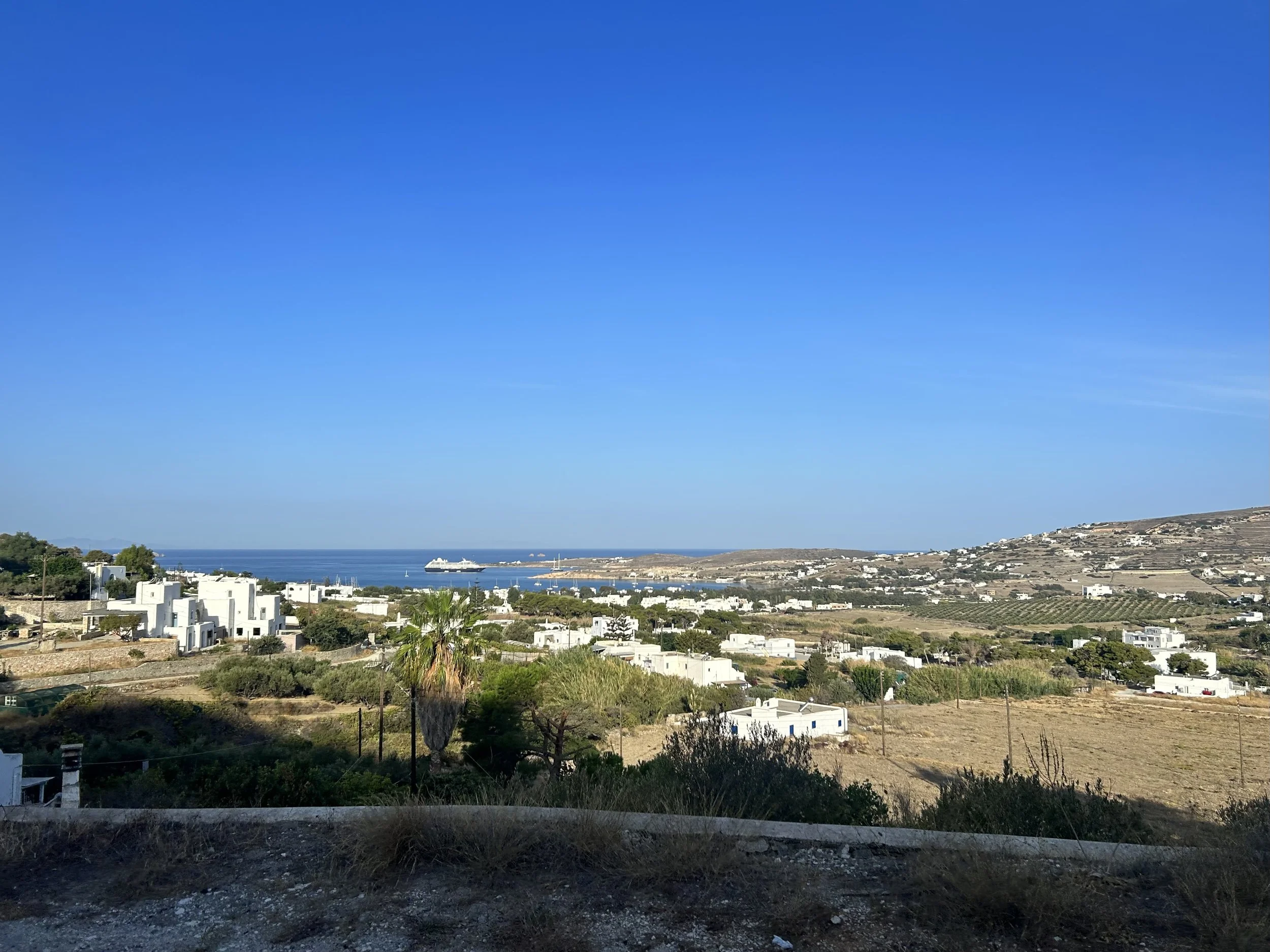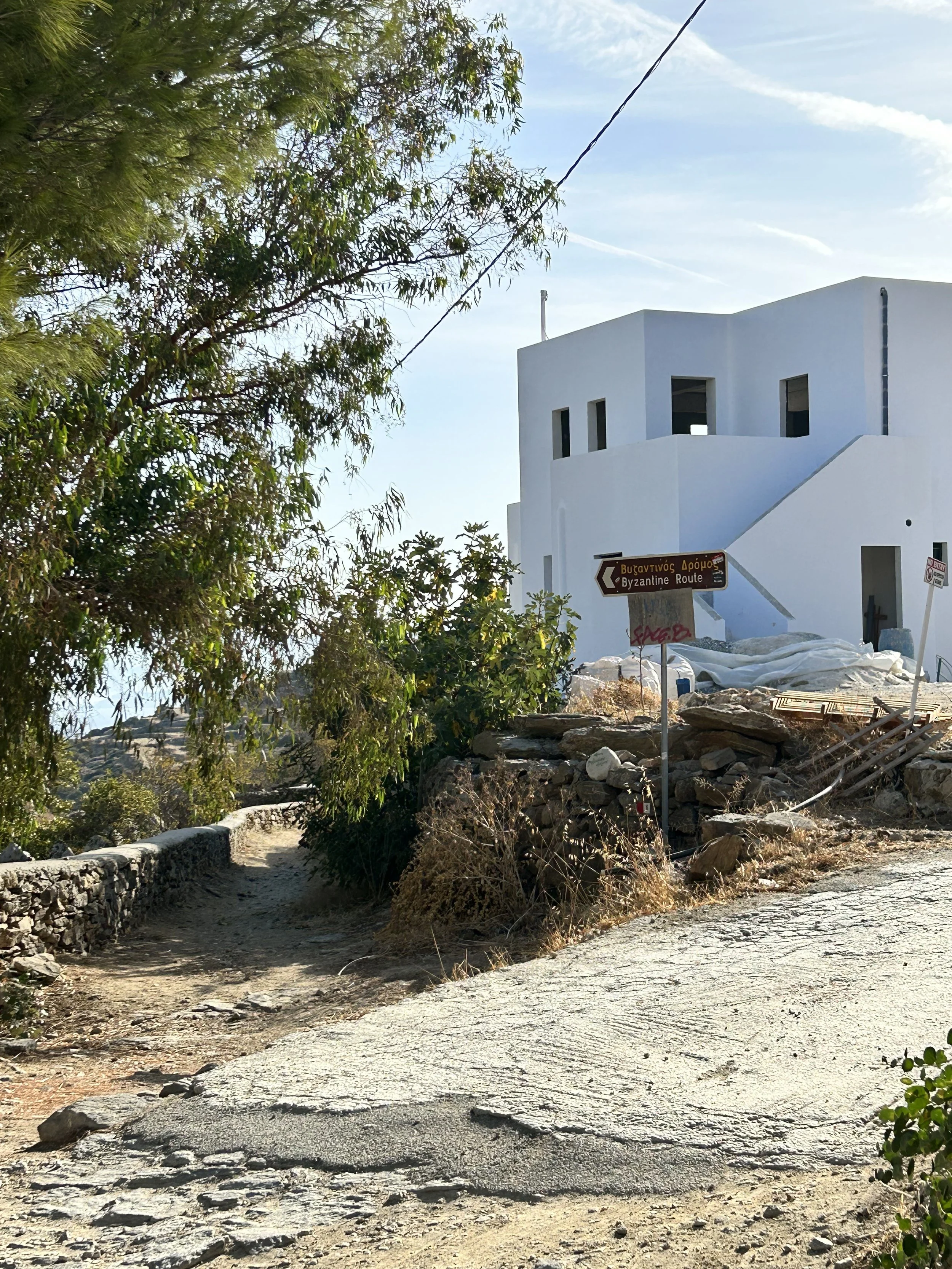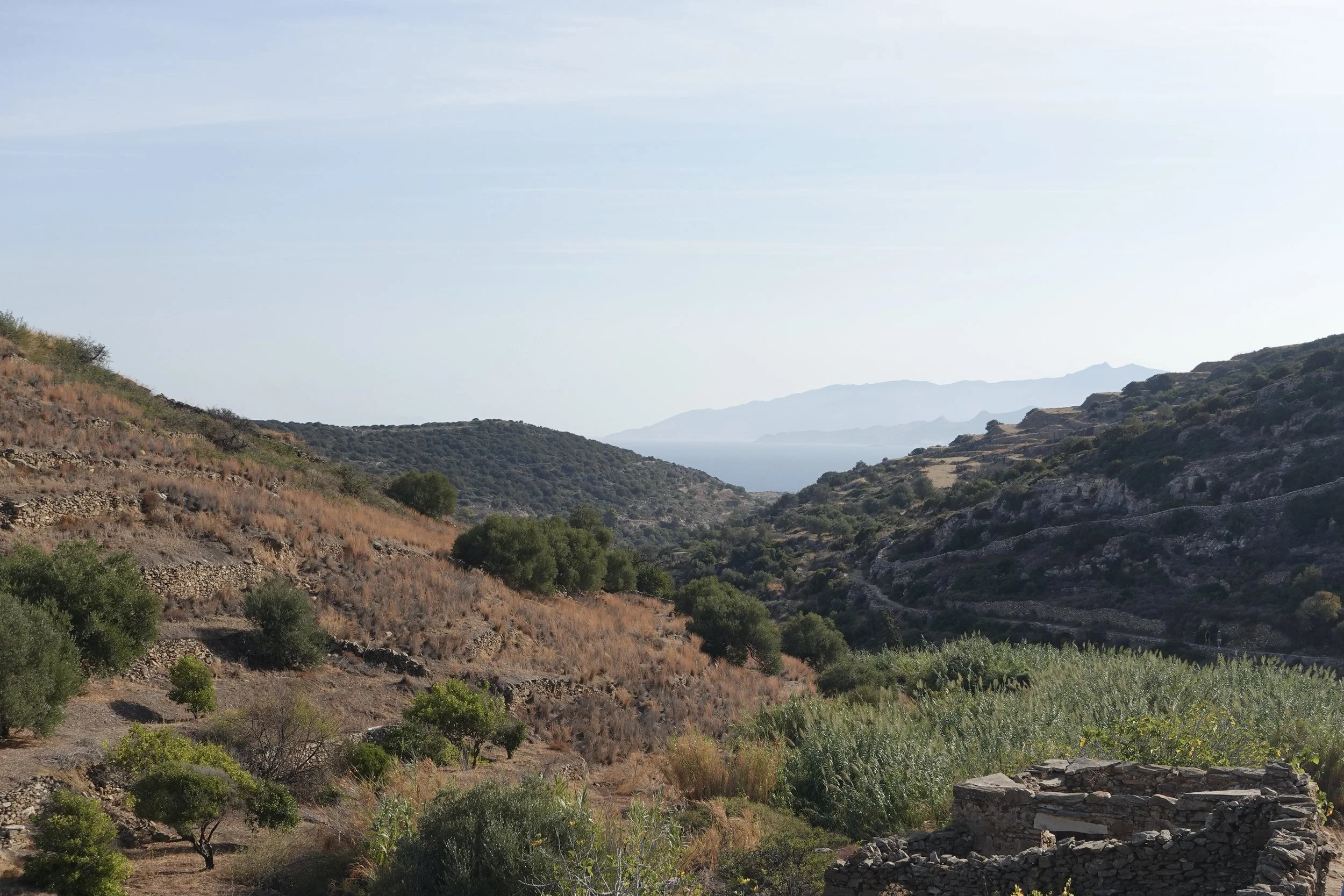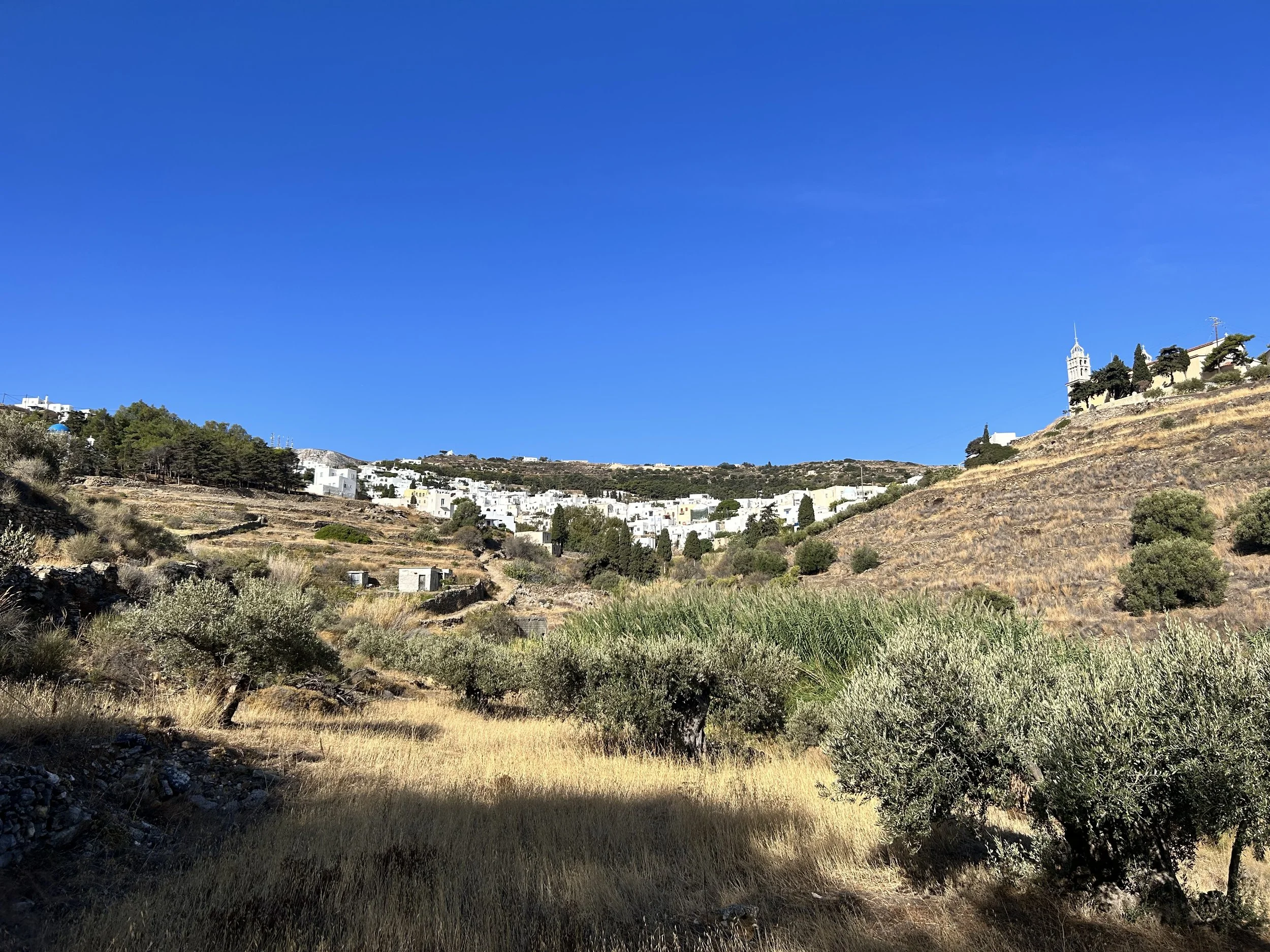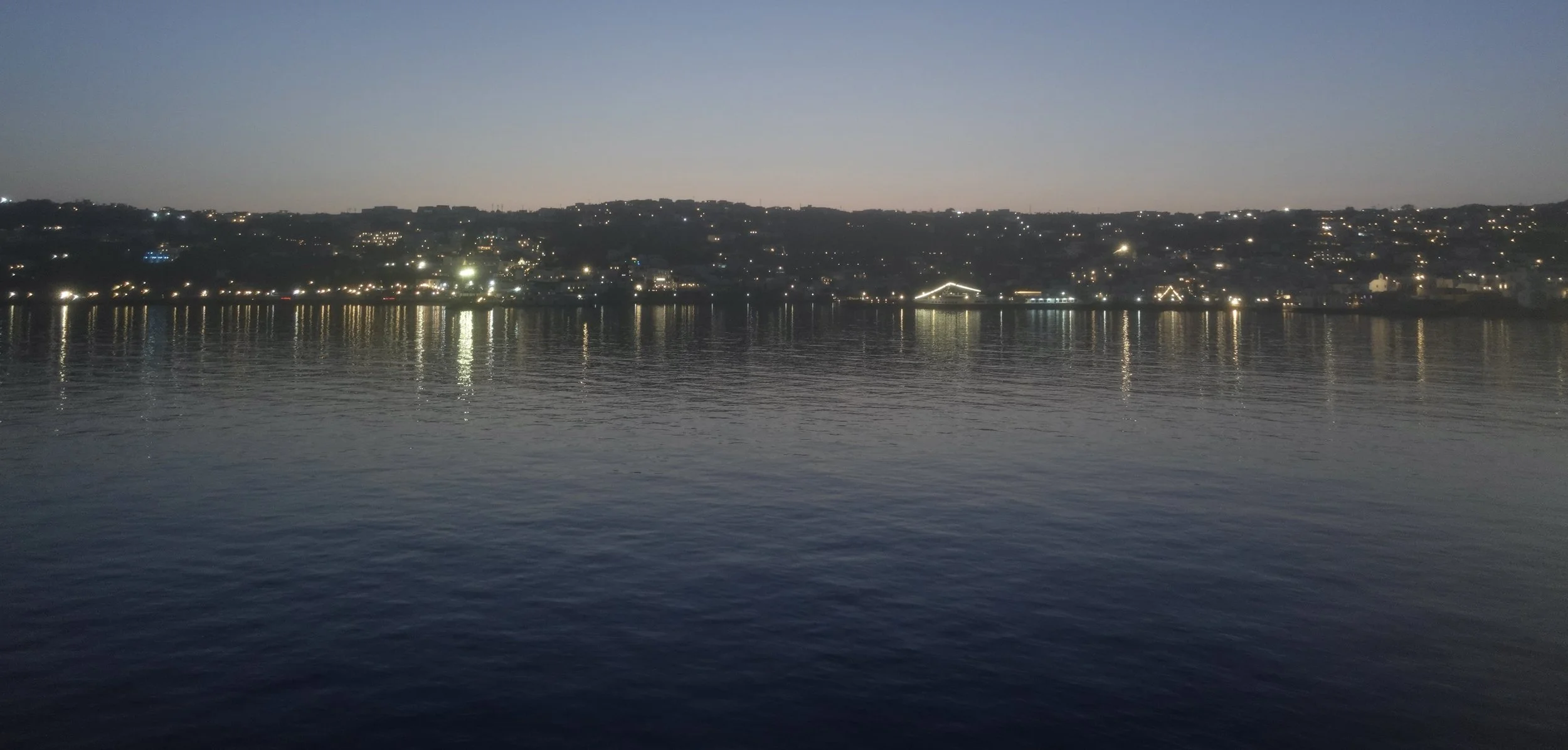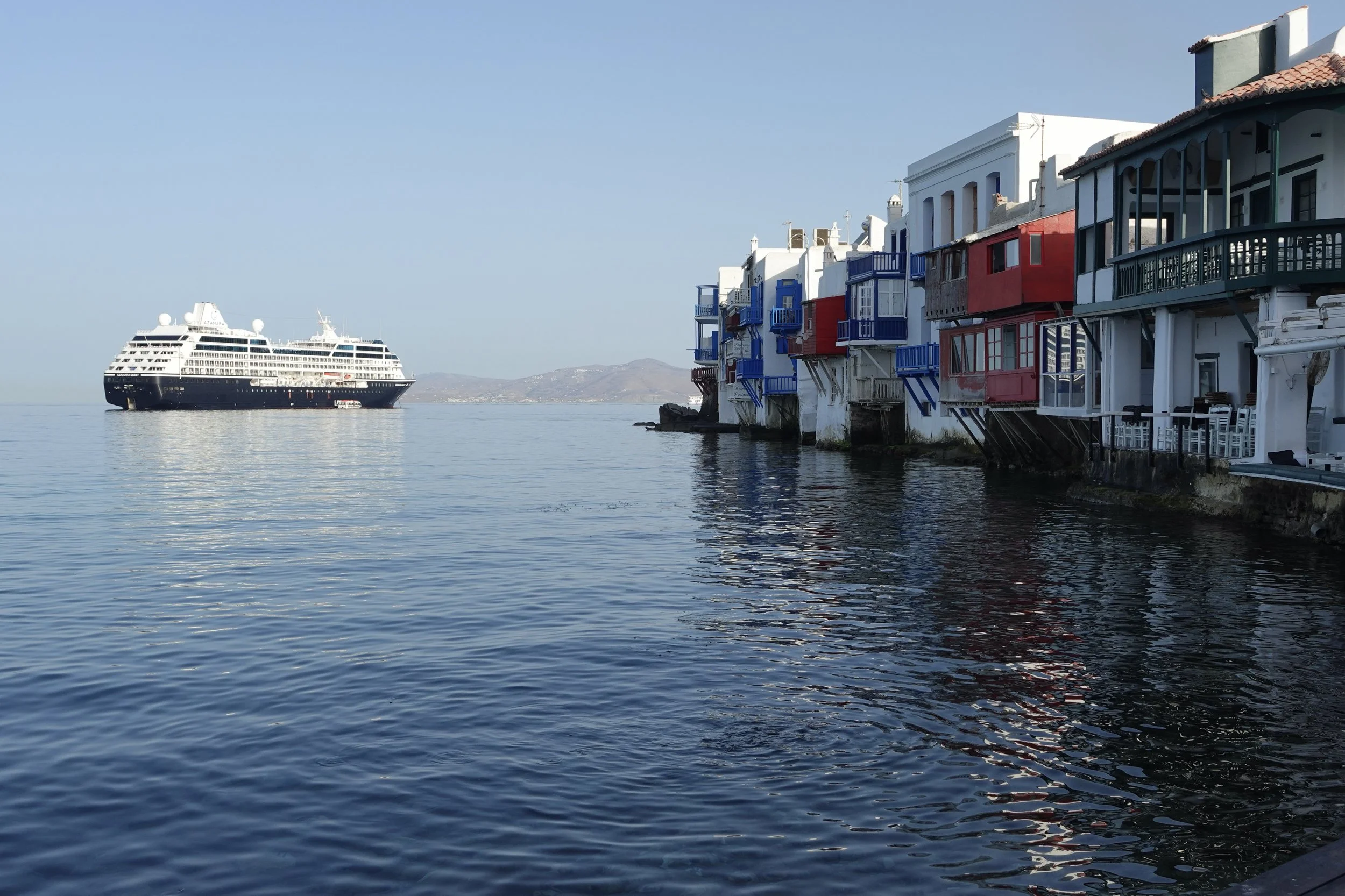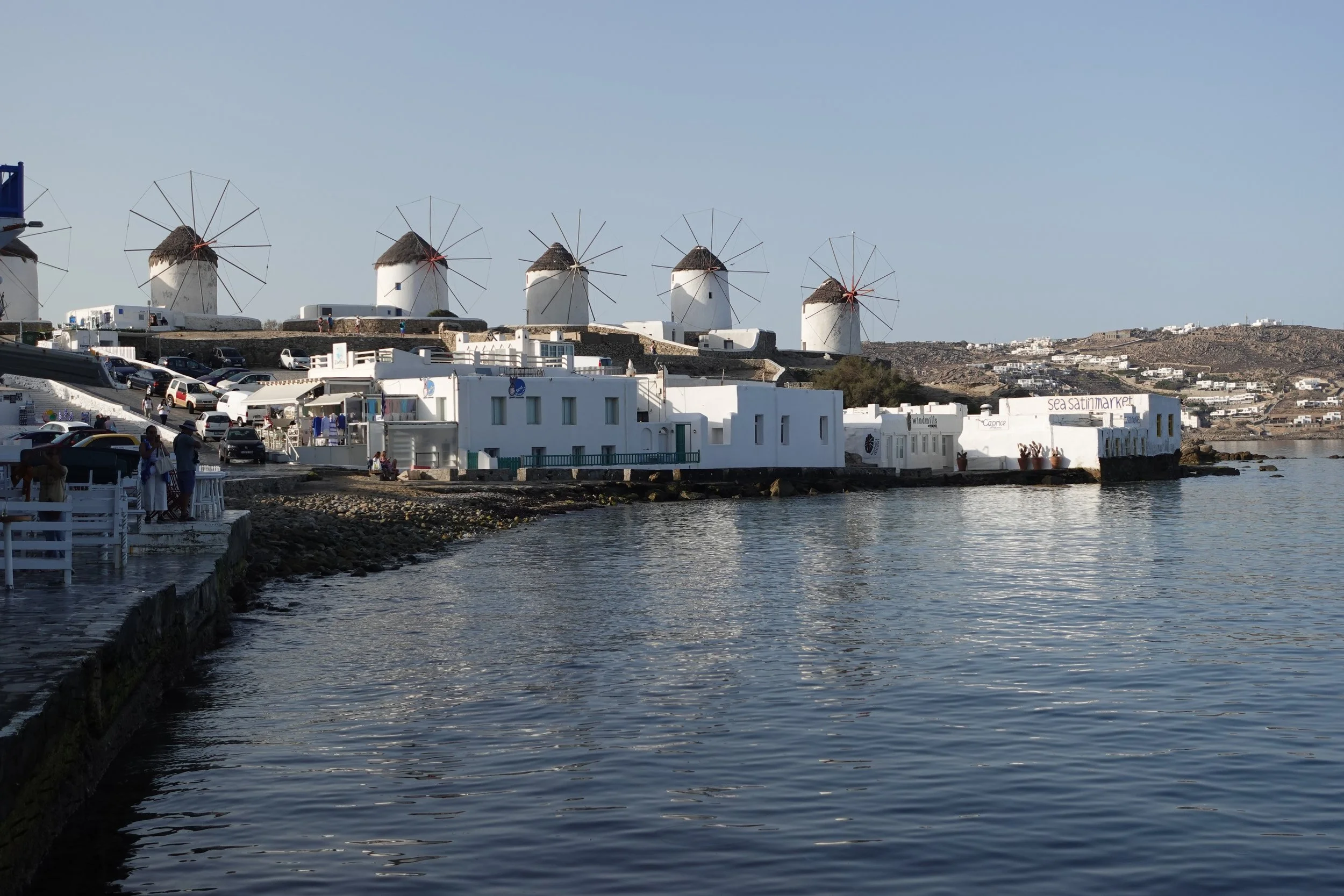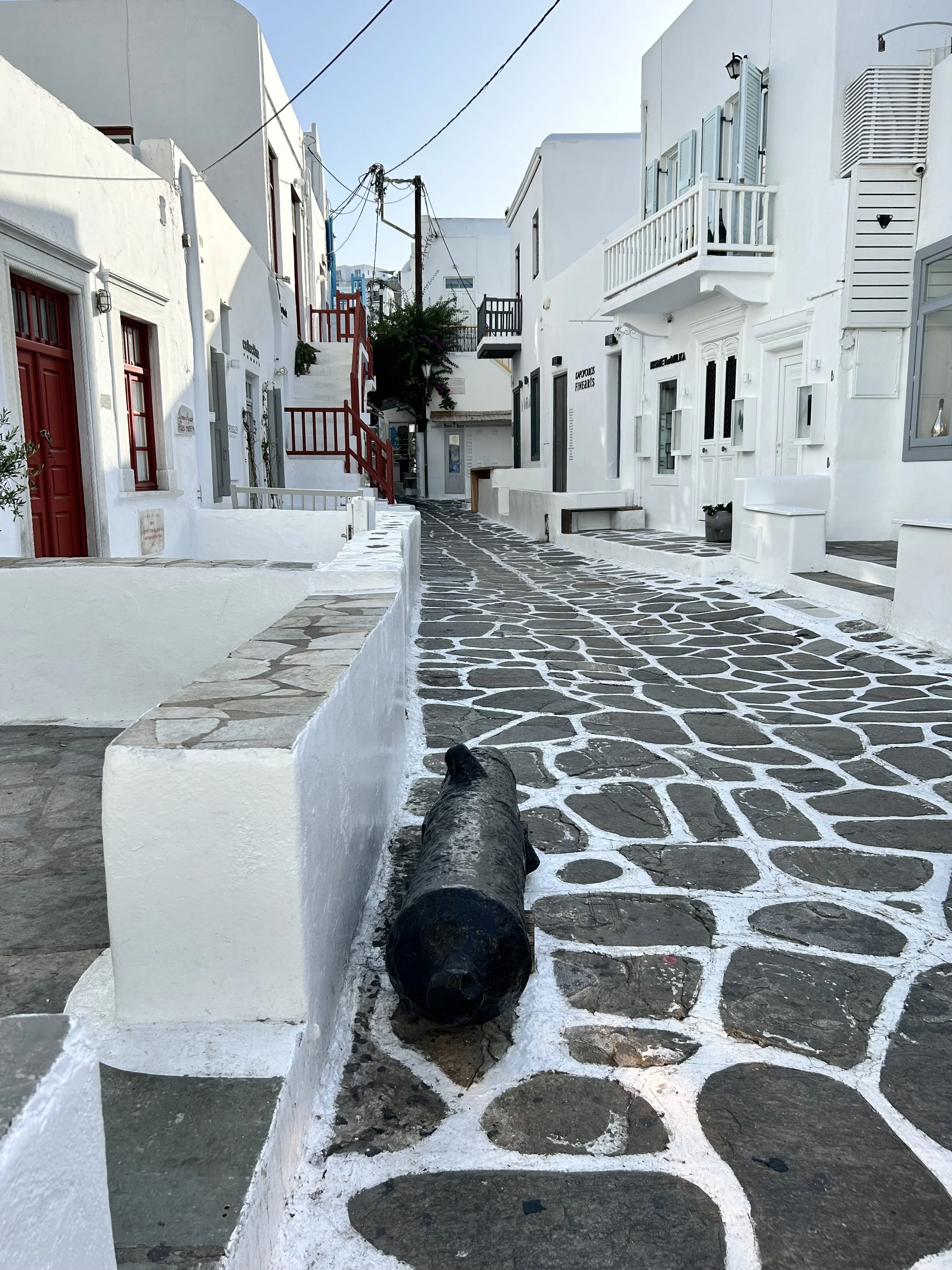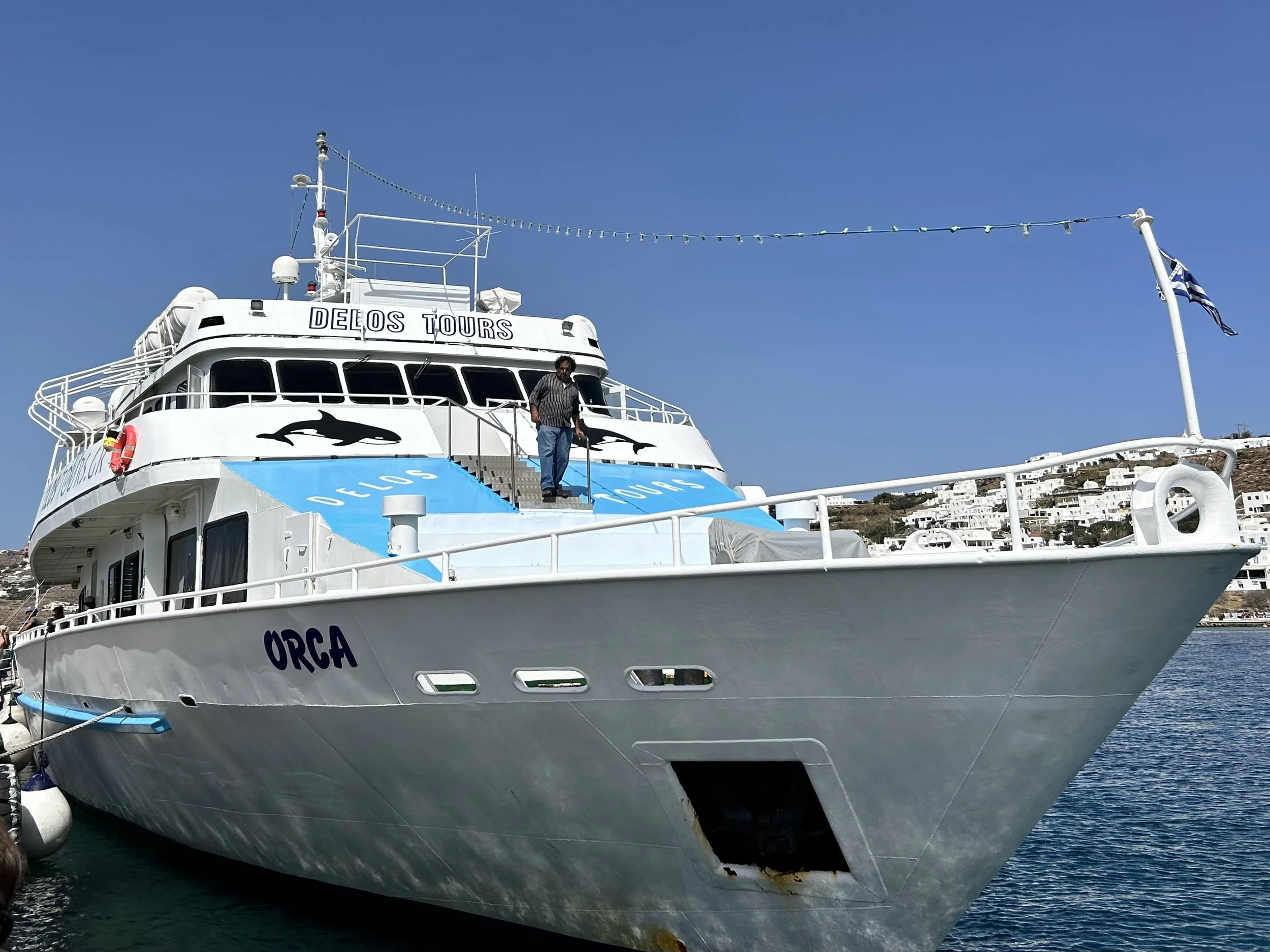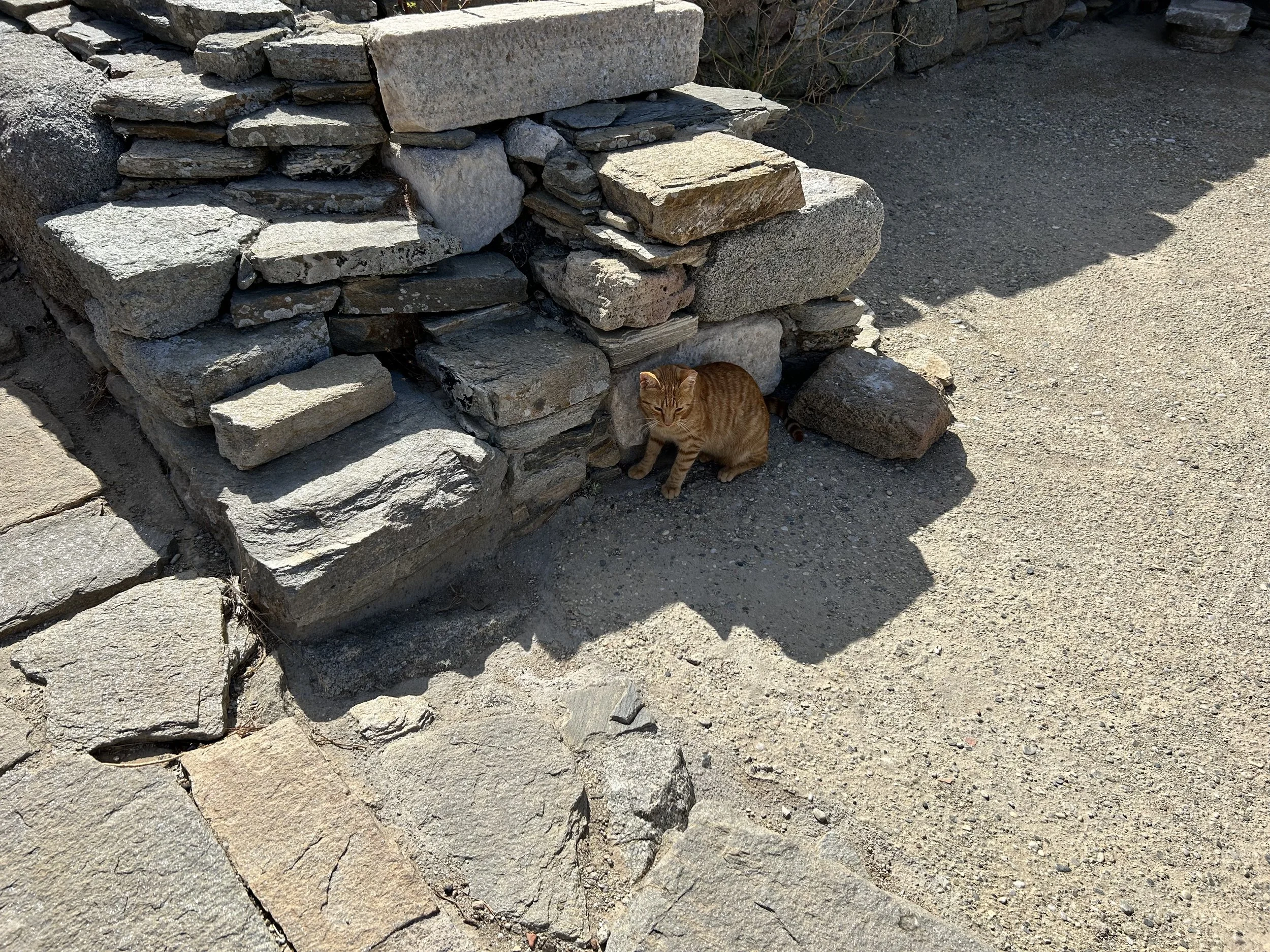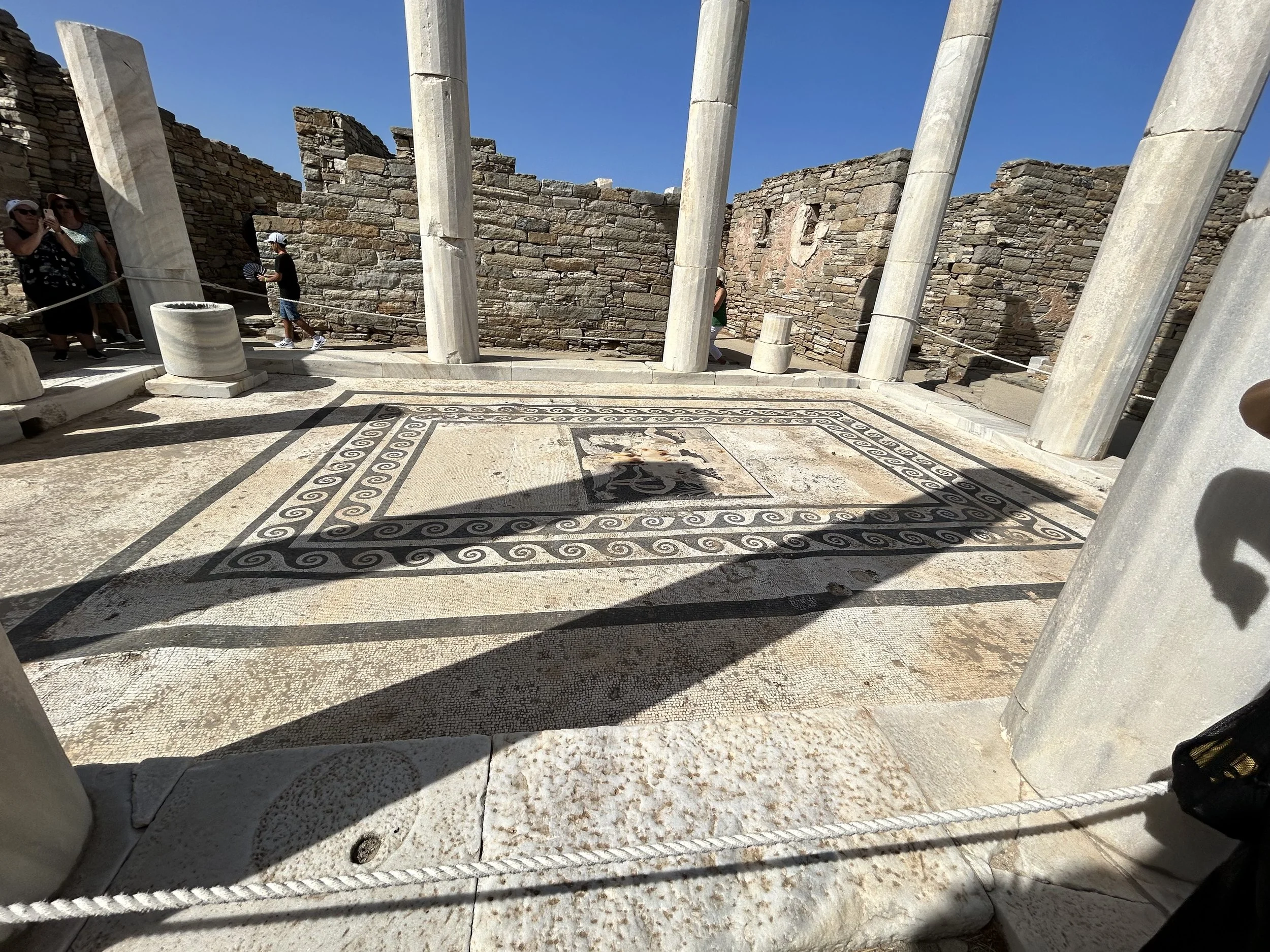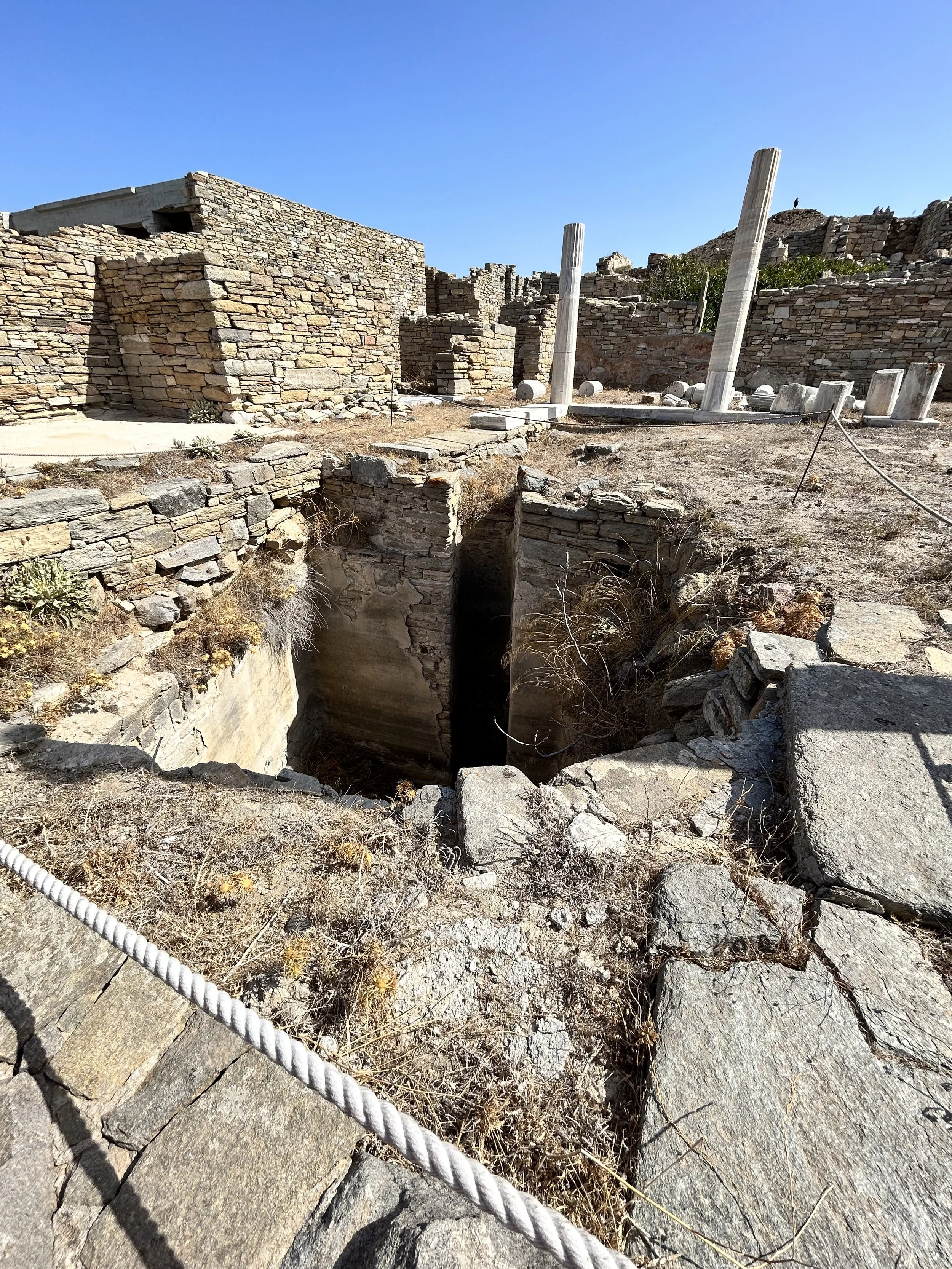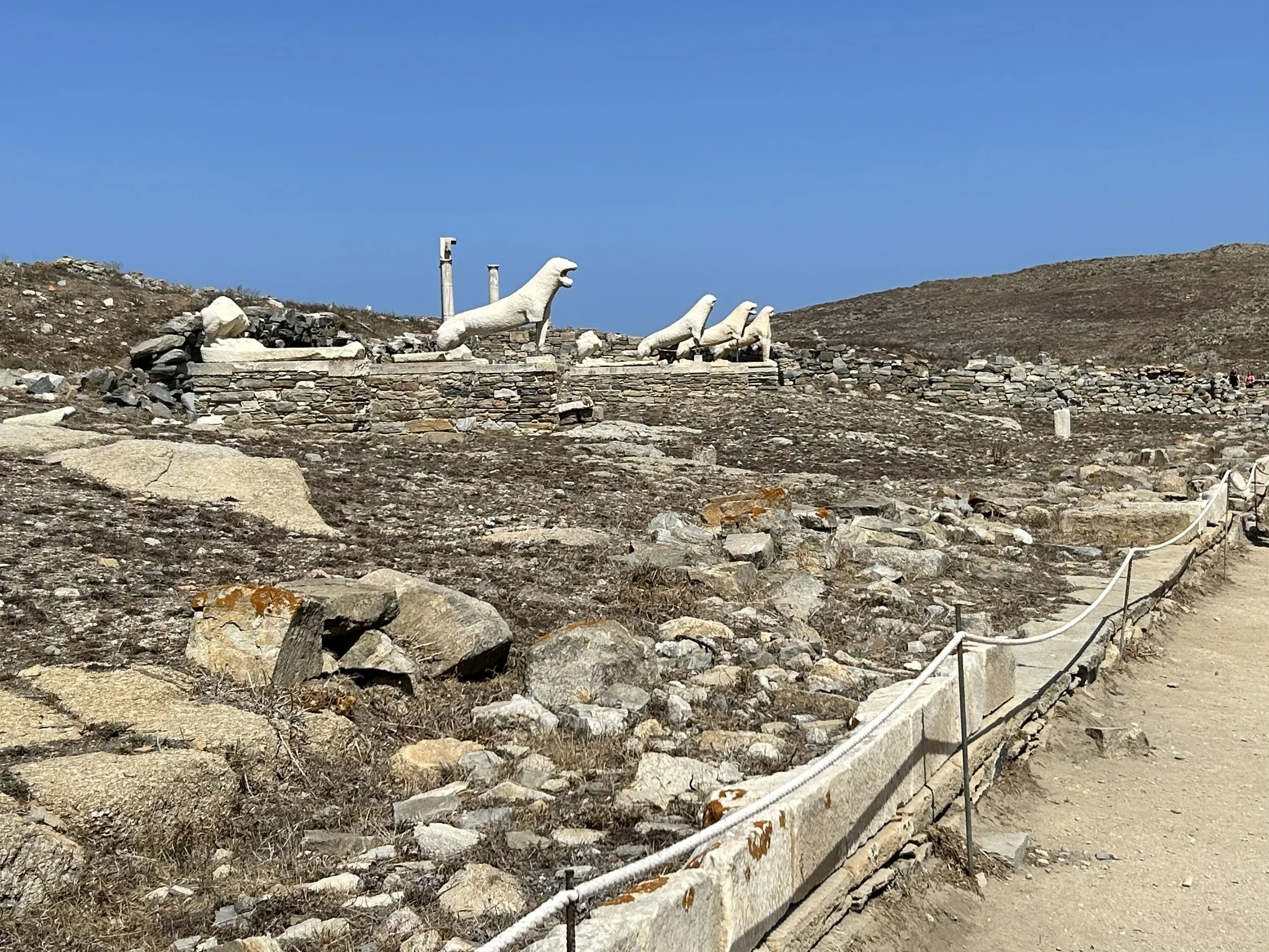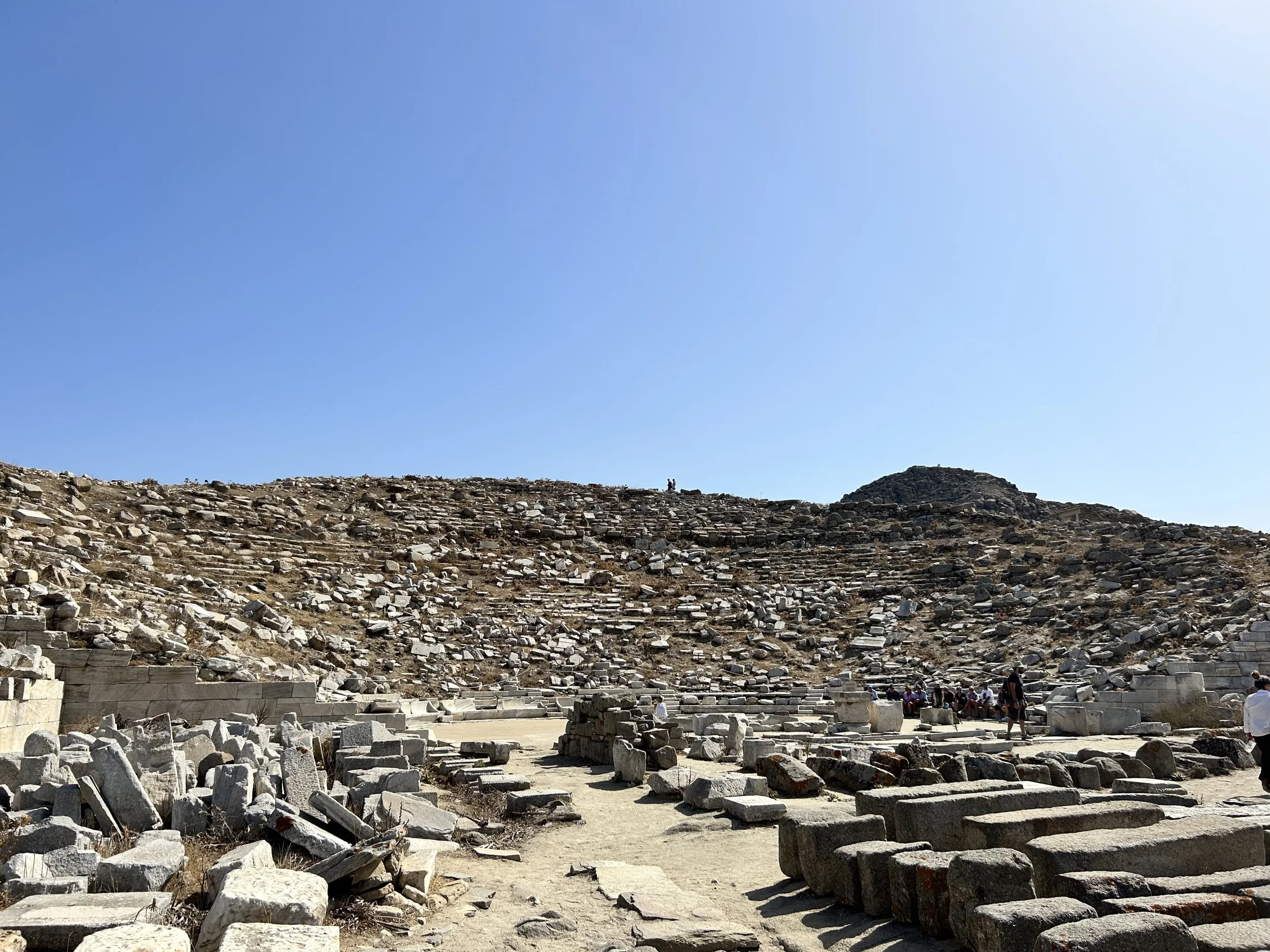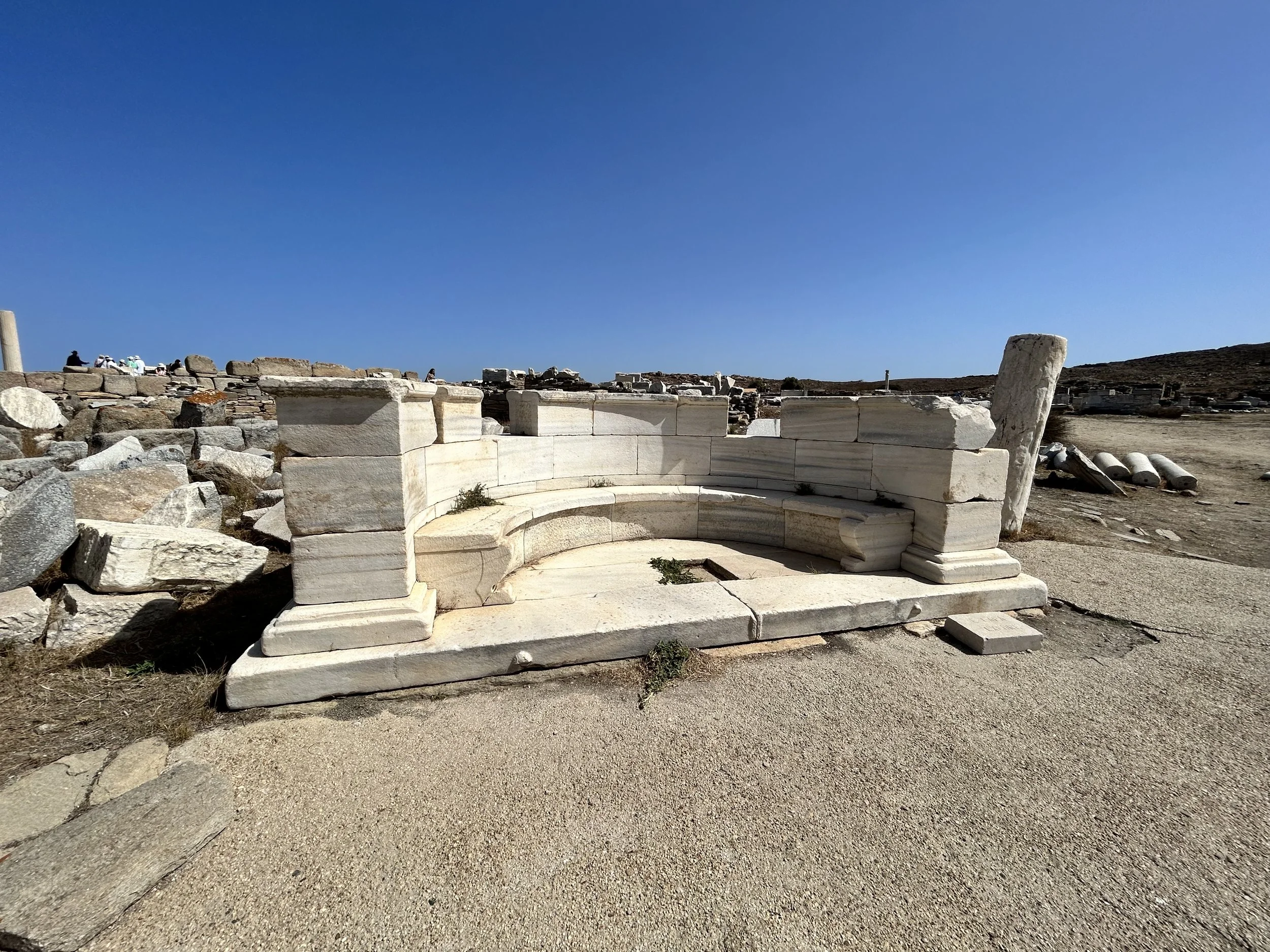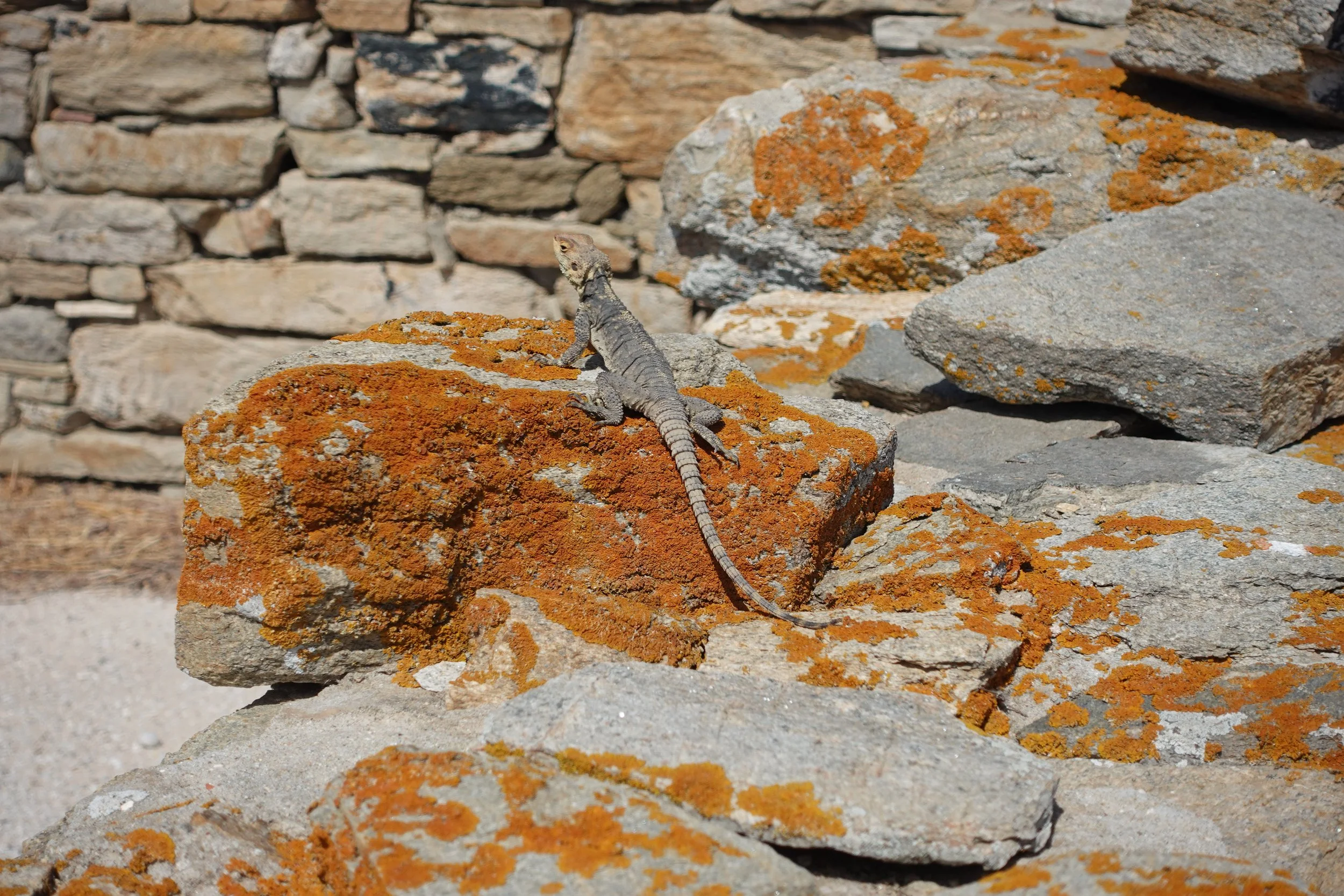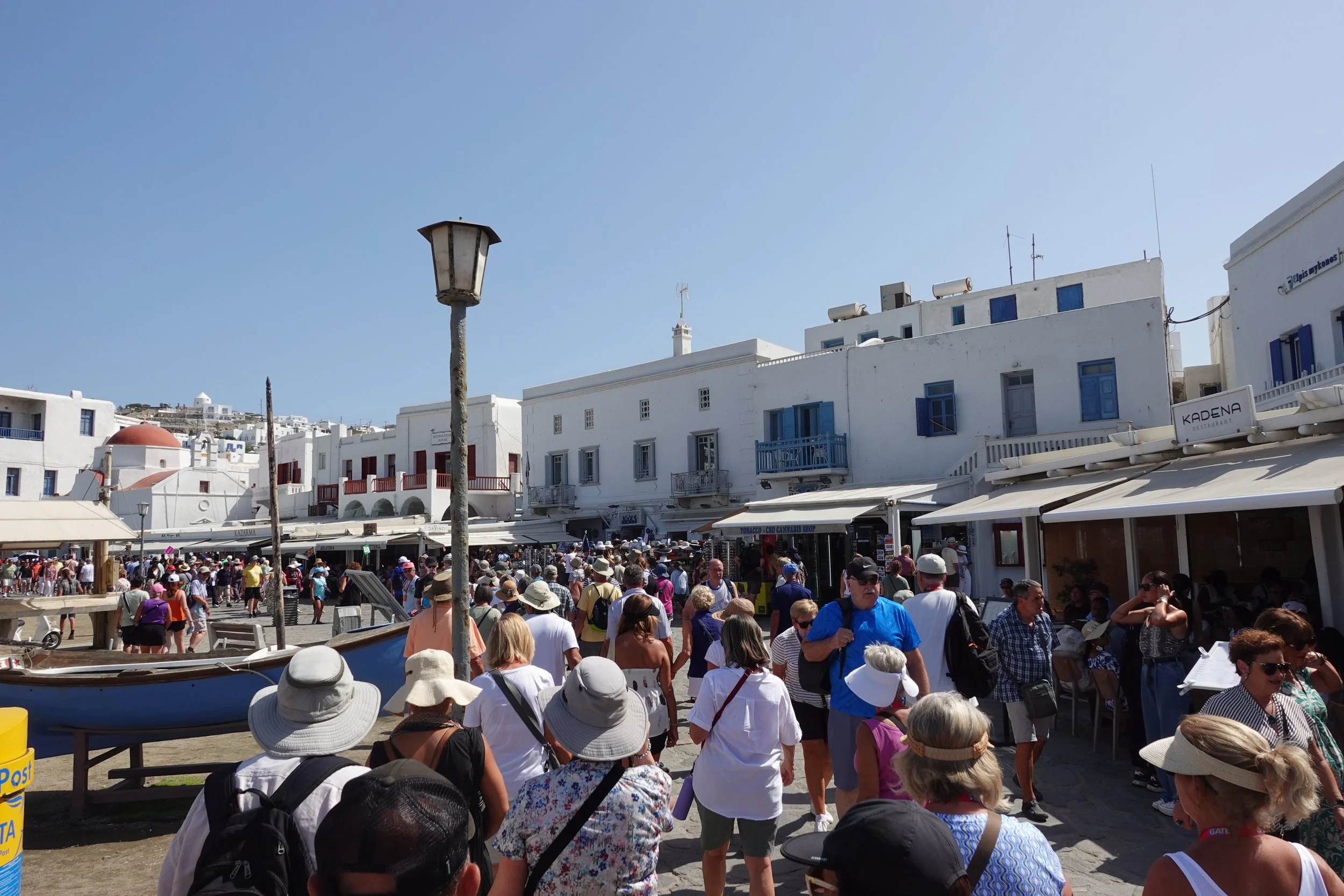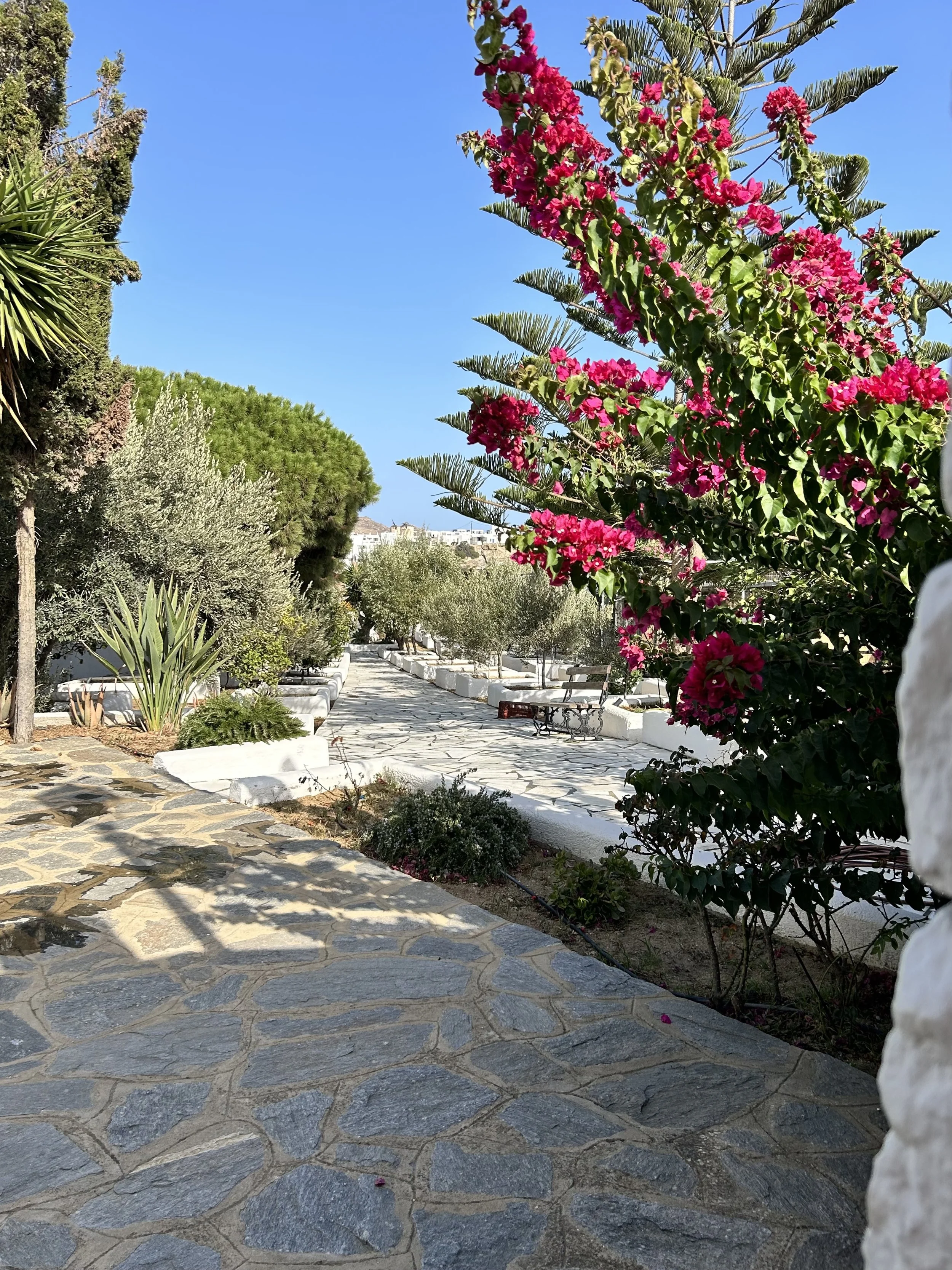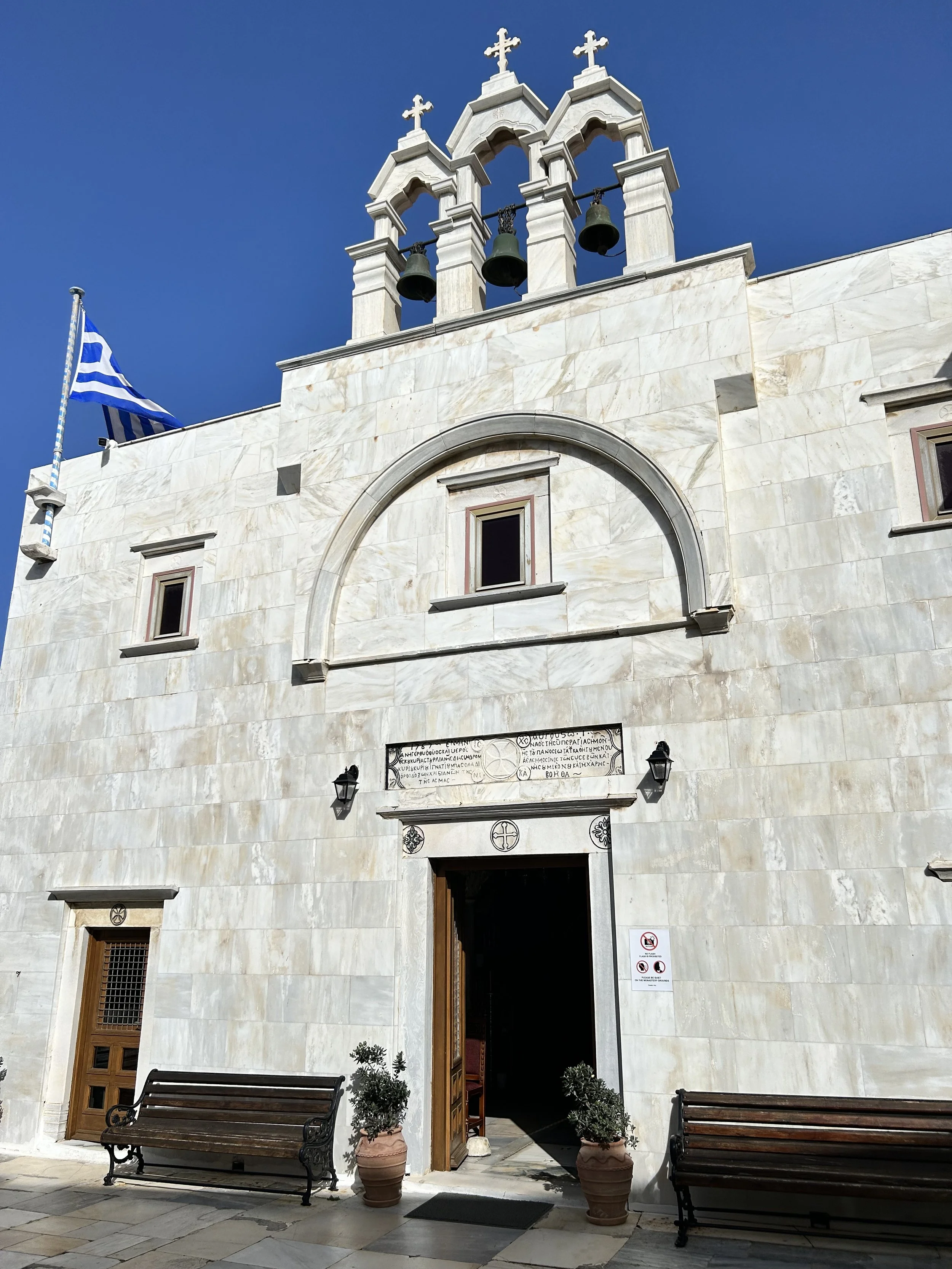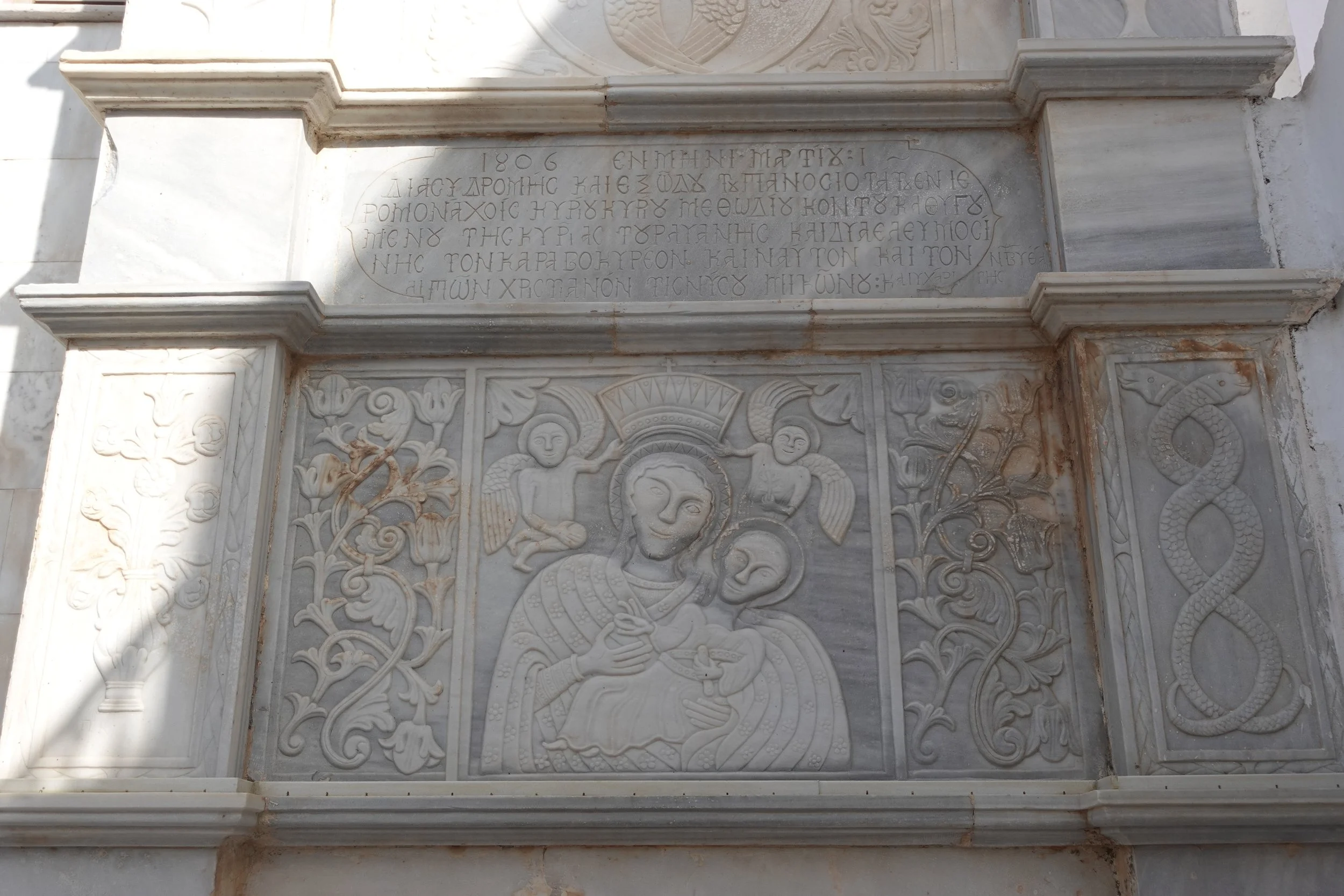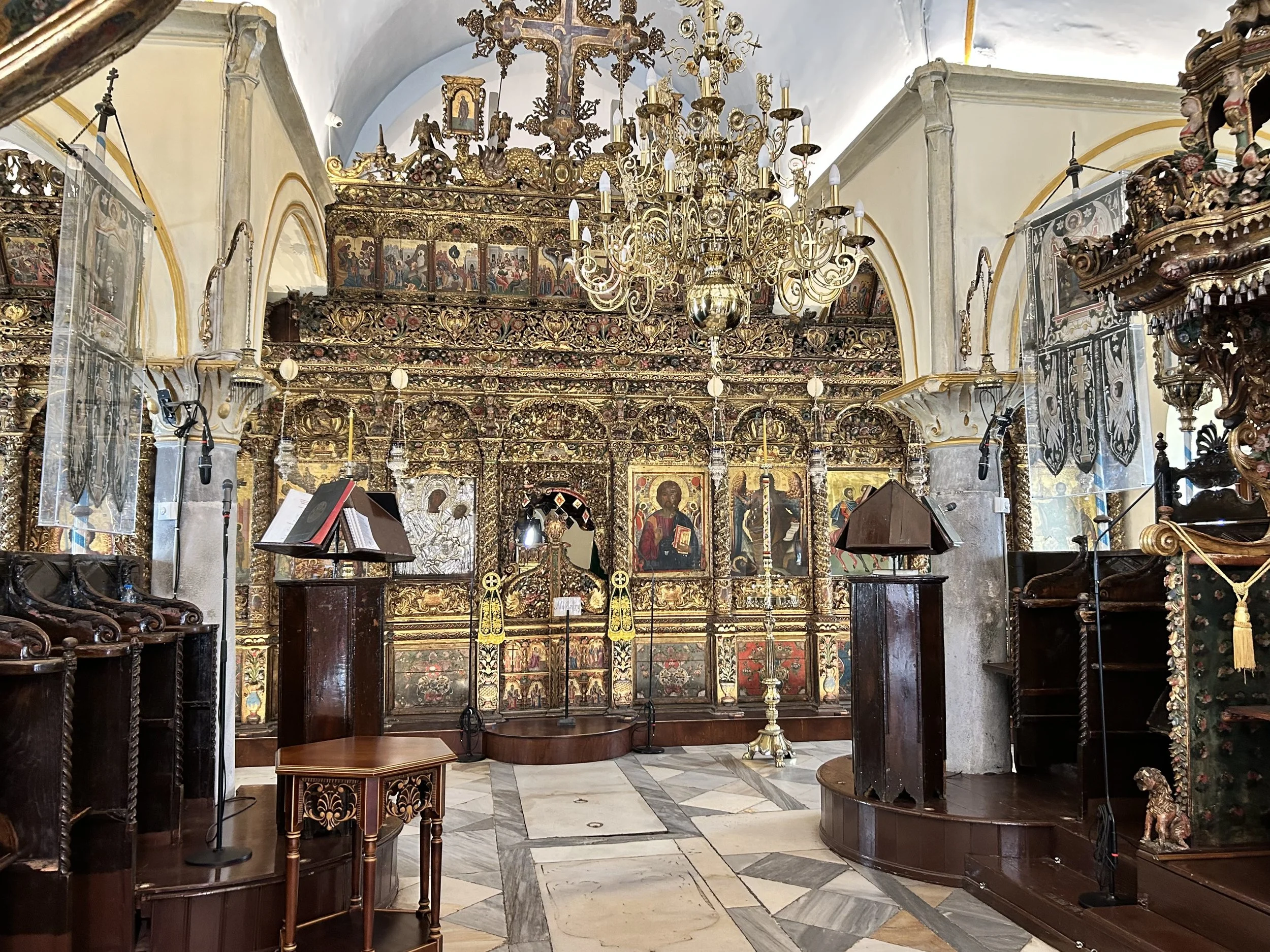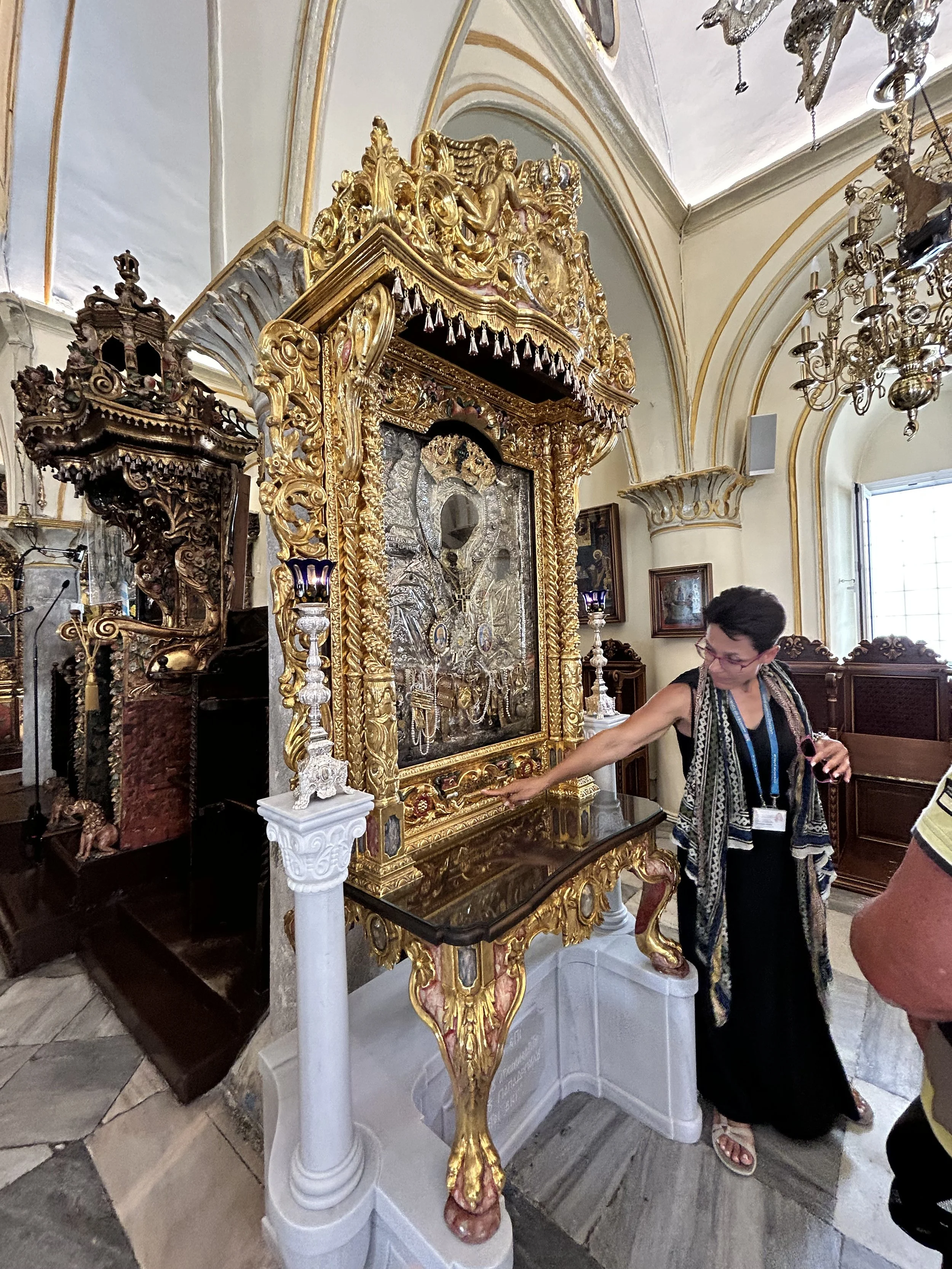Vacation Part 11- Paros and Mykonos
The cruise ship anchored in another small inlet.
Paros is yet another version of the Greek experience. Unlike the castles of Rhodes or the rock strewn mountains of Amorgos, this island is more rolling hills and agriculture, mixed with a generous helping of seasonally occupied vacation villas. It is also the source of some of the most prized marble of all time. Unfortunately, the commercially viable quarries have been exhausted, so the island now earns its keep in other ways, like tourism. Our visit was relatively brief, but thanks to a fantastic local guide, we got a feel for the place. After a boat ride into the port city of Paros, we made our way up to the village of Lefkes for a 3.5 kilometer hike along an old Byzantine Road.
The road dates to around 1000 AD and connects the town of Lefkes with Prodromos. The views are worth the walk and the quiet of the country is relaxing.
Leaving Lefkes, the road descends into a valley lined with stone walls and olive trees.
Looking back at Lefkes from the Byzantine Road.
At the end of the valley, the road drops into the town of Prodromos.
The hike ended with lunch and a lot of water in a well shaded cafe. It was surprising how dry and dusty it was on the hillsides. Once we were cooled off, we returned to the ship for an early departure. The next stop was Mykonos, where the ship would remain at anchor for the night and following day.
During the tourist season, Chora, aka Mykonos Town, is an all-night club scene. When the early morning light crawls over the horizon, the party crowd retreats and the street sweepers take over.
We stepped ashore near a row of water front buildings known as Little Venice. Back in the day, they were luxury waterfront homes. Now they are bars and cafes.
Like most of the Greek islands, windmills were built to harness the typically strong and steady wind. On the day we visited, there was no breeze and the harbor was almost glass.
The Chora windmills are now private homes.
Snapping a photo of an empty street in Mykonos Town was challenging. Even with the sun just cresting the hills, the streets were busy with locals getting breakfast, cleaning up from the night before, or restocking for the day to come.
The crew of this bakery were busy filling the display case when we popped in for some pastries.
Our main objective for the day wasn’t Mykonos. It was actually the small island next door called Delos. Getting there requires a little planning and a boat ride. We booked a tour with a local guide and rode the M/V Orca to the Sacred Harbor of the ancient city of Delos.
Delos is a magnificent archaeological site with a sprawling city full of well preserved artifacts. Despite the shortage of water and other natural resources, in its day, Delos was the cultural, mythological and even financial center of the Greek world. It was an important island to the ancient Greeks, even before it was identified as the birth place of the twin gods Apollo and Artemis, for whom there were massive temples. For comparison, our guide suggested imagining The Vatican, Paris and New York all rolled into one. In the early Roman era, the city was a free port, meaning that anything trans-shipped in the port was exempt from taxes. As a result, it became a premier commercial center and the largest slave market in the greater region. It maintained its status until the end of the first century BC when armed conflict and shifting trade routes left the city in decline. A small population remained after the end of the Roman Empire, but it was abandoned soon after.
The captain of the Orca, standing on the bow of his vessel. His appearance and manner were everything one might expect from a very salty Greek mariner.
Part of the briefing from our guide included a warning about the absolute lack of shade, water or food on the island. With the unusually calm winds, it would be hot. She was right on that score. By late morning, every stone radiated heat and the sun was relentless.
The remnants of walls provided slivers of shade, barely big enough for a cat.
The House of Dionysus contained what is reported to be one of the most important mosaics of the Hellenistic period. The center panel featured the god Dionysus riding a panther. The original panel was removed to a museum and replaced with a replica.
Because the island had very little water, cisterns and water collection channels were built into or under residential structures.
Many of the island’s buildings and temples were built as offerings. Around 600 BC, the people on the island of Naxos donated the Terrace of the Lions. It is estimated that as many as 16 Naxian marble lions lined the avenue.
It was a Greek city, so it had to have a theater. It was completed around 250BC and seated nearly 7,000.
A common architectural feature was the exedra. A recessed curved bench, often topped with a half dome, used for conversation. We saw these in many of the ruins we toured and it occurred to us we might need one in the backyard.
Aside from the 15 to 20 people who maintain and guard the island, the only other residents are animals.
On return to Mykonos Town, we were amazed at the size of the crowds. There were three other large cruise ships in the port, accounting for several thousand folks on the street. We made our way through the masses and followed our guide for one more taste of the Mykonos life.
Twenty minutes by bus and we were in yet another version of Greece. The town of Ano Mera is mostly locals serving locals and blessedly quiet and calm.
After a traditional Greek mid-day meal, our last stop on the island was the 16th century Tourliani Monastery.
The bell tower facade was restored in 1806. Everybody smiles in this monastery, even the snakes.
The iconostasis, dating to 1775, was something to see and stood in complete contrast to the island’s reputation for tourist debauchery down in Mykonos Town.
Our guide explaining the sacred and miraculous Icon of the Virgin Mary. It was found floating in the sea some time before the church was built in 1542.
After returning to the harbor, we were glad to see the ship. It had been a very long day in the sun and we were beat. The tender delivered us to the air-conditioned splendor of our stateroom and a shower before dinner. It was our last night on the ship, and before we could turn in for the night, we had to pack our bags. It’s the bummer part of any cruise, but for us, it wasn’t the end of the journey. The next morning, we would disembark in Athens for one last blast of antiquity.
